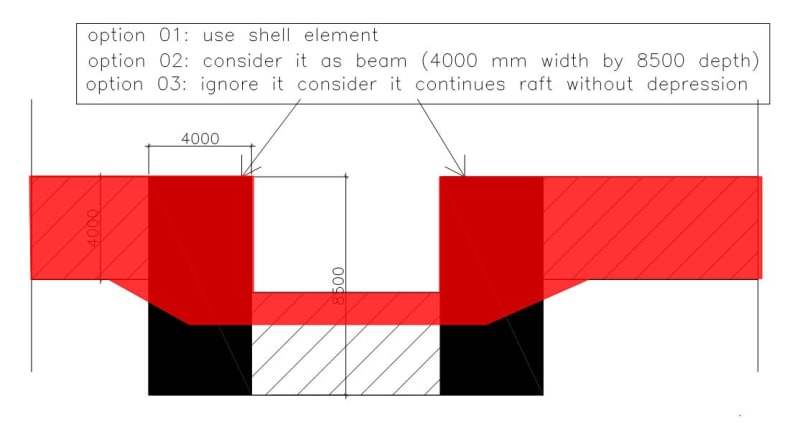Hi,
I am trying to model elevator pits in Raft in CSI SAFE. the raft foundation thickness is 4000 mm and the PIT Bottom slab is depressed by 4500mm below the Top of RAFT. by that way, we create a raft with a thickness of 8500 mm at the edge of the elevator pit
my question is, which of the following option do you recommend for pit modelling?
1- Using a shell element with a thickness of 8500 mm at the edge of the elevator pit? (refer to attached sketch)
1- Using frame element with thickness 8500 mm and width 4000 mm at the edge of the elevator pit? (refer to attached sketch)
3- ignore the different level and design the raft foundation with a uniform thickness of 4000 mm
I am trying to model elevator pits in Raft in CSI SAFE. the raft foundation thickness is 4000 mm and the PIT Bottom slab is depressed by 4500mm below the Top of RAFT. by that way, we create a raft with a thickness of 8500 mm at the edge of the elevator pit
my question is, which of the following option do you recommend for pit modelling?
1- Using a shell element with a thickness of 8500 mm at the edge of the elevator pit? (refer to attached sketch)
1- Using frame element with thickness 8500 mm and width 4000 mm at the edge of the elevator pit? (refer to attached sketch)
3- ignore the different level and design the raft foundation with a uniform thickness of 4000 mm


